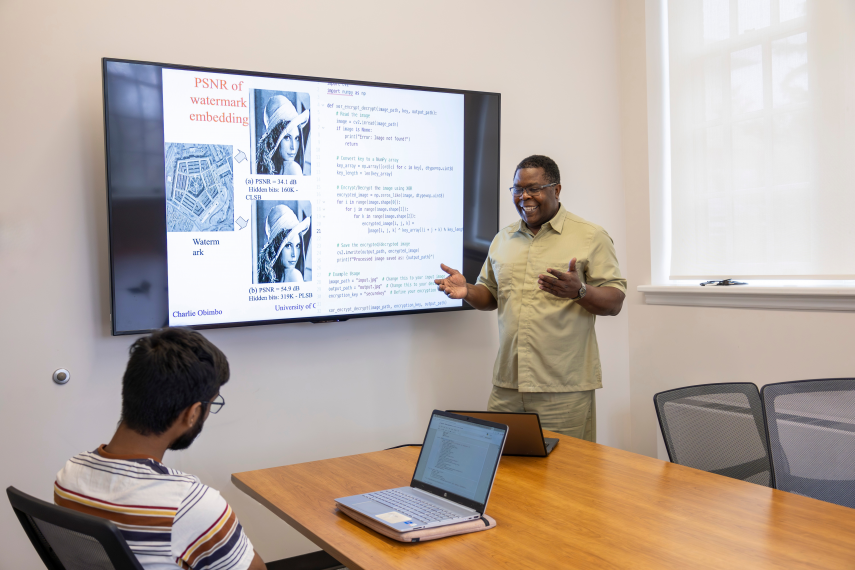AI-Resistant Algorithm Protects Digital Images

The Rise of Generative AI and Deep-fakes
With the rise of generative artificial intelligence (AI) comes a rise in digital identity theft through the form of “deep-fakes”. A deep-fake is false media such as photos, videos or audio clips that are designed to mislead and misinform. They are generated by manipulating existing media, including photos or videos posted on social media platforms. One high-stakes example is when in 2024, cybercriminals created deep-fake videos and audio to impersonate and mimic a finance worker’s face and voice, ultimately tricking a bank into authorizing a $35 million-dollar fraudulent transaction.
Everyday citizens are also at risk of being deep-faked or having their information stolen by cybercriminals through misinformation. Suppose you deposit your paycheque by submitting a photo of it to your banking app. How does the bank keep that photo secure? When you need medical images transferred from your doctor to a specialist doctor across the country, how do the medical professionals ensure these sensitive medical images stay secure?
The answer to both of these questions is encryption, which is the process of converting data into an unreadable format to prevent unauthorized users (hackers) from accessing it. Researchers in the University of Guelph’s School of Computer Science have developed a new hybrid algorithm that enhances the security of digital image encryption.
A Hybrid Algorithm Approach to Digital Image Encryption
Dr. Charlie Obimbo, a professor in the School of Computer Science, has a key research focus on encryption and cryptography, which is the practice of securing information and communication systems using mathematical techniques. The hybrid algorithm created by Obimbo and colleagues combines a chaotic Hénon map and a chaotic logistic map, which can be thought of as complex mathematical functions. These maps use concepts in cryptography referred to as “confusion” and “diffusion” to create the random, chaotic numbers in these encryption keys
To visualize how this encryption occurs, imagine your favourite book. The chaotic logistic map is responsible for randomly swapping the order of words (confusion), and the chaotic Henon map then randomly replaces letters in those words (diffusion), making the book unreadable.
Before encryption, the photo is separated into red, green, and blue colour matrices so that each colour is encrypted independently to increase security. The maps within the algorithm then generate highly unpredictable encryption keys. To decrypt, the same mathematical functions (maps) are applied in the reverse order.
New Encryption Algorithm is Stronger Than AI
What makes this hybrid algorithm so robust is because it scrambles the bits, the binary code behind each key, encrypting even more information and making it that much harder to decrypt. Therefore, this hybrid algorithm has an incredibly large key space, which is the total number of possible keys in a cryptographic system. The large key space of this algorithm makes it impossible for hackers, even with AI, to try every possible key combination and break the encryption.
“While we are satisfied that this hybrid algorithm successfully encrypts digital images, we’d like to extend the applications to videos and audio as well as enhance the speed and strength of the algorithm before it is implemented,” says Obimbo.
“We hope to integrate this algorithm into already existing cybersecurity frameworks.”
This work was supported/funded by the Qatar National Library.
Al-Hyari A., Abu-Faraj M.A., Obimbo C., Alazab M. Chaotic Hénon–Logistic Map Integration: A Powerful Approach for Safeguarding Digital Images. J. Cybersecur. Priv. 2025. doi: 10.3390/jcp5010008
This story was written by Jamie Dawson as part of the Science Communicators: Research @ CEPS initiative. Jamie is an M.Sc. candidate in the Chemistry Department under Dr. Mario A. Monteiro. Her research focus is on characterizing bacterial cell-surface carbohydrate structures to ultimately develop glycoconjugate vaccines.